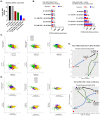Valproic acid use is associated with diminished risk of contracting COVID-19, and diminished disease severity: Epidemiologic and in vitro analysis reveal mechanistic insights
- PMID: 39093886
- PMCID: PMC11296636
- DOI: 10.1371/journal.pone.0307154
Valproic acid use is associated with diminished risk of contracting COVID-19, and diminished disease severity: Epidemiologic and in vitro analysis reveal mechanistic insights
Abstract
The SARS-CoV-2 pandemic has caused unprecedented worldwide infections from persistent mutant variants with various degrees of infectivity and virulence. The elusiveness of a highly penetrant, worldwide vaccination strategy suggests that the complete eradication of SARS-CoV-2 is unlikely. Even with the advent of new antiviral agents, the disease burden worldwide continues to exceed current preventative and therapeutic strategies. Greater interest has been placed towards the development of affordable,broadly effective antiviral therapeutics. Here, we report that the small branched-chain fatty acid Valproic acid (VPA), approved for maintenance of seizure and bipolar disorder, has a novel anti- coronavirus activity that can be augmented with the addition of a long-chain, polyunsaturated omega-3 fatty acid, Docosahexaenoic acid (DHA). An EMR-based epidemiological study of patients tested for COVID-19 demonstrated a correlation exists between a reduced infection rate in patients treated withVPA of up to 25%, as well as a decreased risk of emergency room visits, hospitalization, ICU admission,and use of mechanical ventilation. In vitro studies have demonstrated that VPA modifies gene expression in MRC5 cells. Interestingly, VPA correlates with the inhibition of several SARS-CoV2 interacting genes and the greater inhibition of alpha-coronavirus HCoV-229E (a "common cold" virus) and SARS-CoV2. The VPA-DHA combination activates pre-existing intracellular antiviral mechanisms normally repressed by coronaviruses. Gene expression profiles demonstrate subtle differences in overall gene expression between VPA-treated and VPA-DHA-treated cells. HCoV-229E infection caused an intensely different response with a marked induction of multiple intracellular inflammatory genes. Changes in gene expression took at least 24 hours to manifest and most likely why prior drug screens failed to identify any antiviral VPA activity despite in silico predictions. This report demonstrates an interaction between HDAC inhibition and the potent activation of cellular antiviral responses. A foundation now exists for a low-cost, highly effective antiviral strategy when supplemented with DHA.
Copyright: © 2024 Watson et al. This is an open access article distributed under the terms of the Creative Commons Attribution License, which permits unrestricted use, distribution, and reproduction in any medium, provided the original author and source are credited.
Conflict of interest statement
The authors have declared that no competing interests exist.
Figures







Similar articles
-
Epigenetic targeting of the ACE2 and NRP1 viral receptors limits SARS-CoV-2 infectivity.Clin Epigenetics. 2021 Oct 11;13(1):187. doi: 10.1186/s13148-021-01168-5. Clin Epigenetics. 2021. PMID: 34635175 Free PMC article.
-
Inhibition of coronavirus infection by a synthetic STING agonist in primary human airway system.Antiviral Res. 2021 Mar;187:105015. doi: 10.1016/j.antiviral.2021.105015. Epub 2021 Jan 12. Antiviral Res. 2021. PMID: 33444702 Free PMC article.
-
Valproic acid could help in the fight against COVID-19: A case-control study.Neurologia (Engl Ed). 2024 Sep;39(7):549-554. doi: 10.1016/j.nrleng.2023.12.009. Neurologia (Engl Ed). 2024. PMID: 39232592
-
Current status of antivirals and druggable targets of SARS CoV-2 and other human pathogenic coronaviruses.Drug Resist Updat. 2020 Dec;53:100721. doi: 10.1016/j.drup.2020.100721. Epub 2020 Aug 26. Drug Resist Updat. 2020. PMID: 33132205 Free PMC article. Review.
-
Current Strategies of Antiviral Drug Discovery for COVID-19.Front Mol Biosci. 2021 May 13;8:671263. doi: 10.3389/fmolb.2021.671263. eCollection 2021. Front Mol Biosci. 2021. PMID: 34055887 Free PMC article. Review.
Cited by
-
Valproate Administration to Adult 5xFAD Mice Upregulates Expression of Neprilysin and Improves Olfaction and Memory.J Mol Neurosci. 2024 Nov 16;74(4):110. doi: 10.1007/s12031-024-02287-3. J Mol Neurosci. 2024. PMID: 39549146
References
MeSH terms
Substances
Grants and funding
LinkOut - more resources
Full Text Sources
Medical
Miscellaneous

